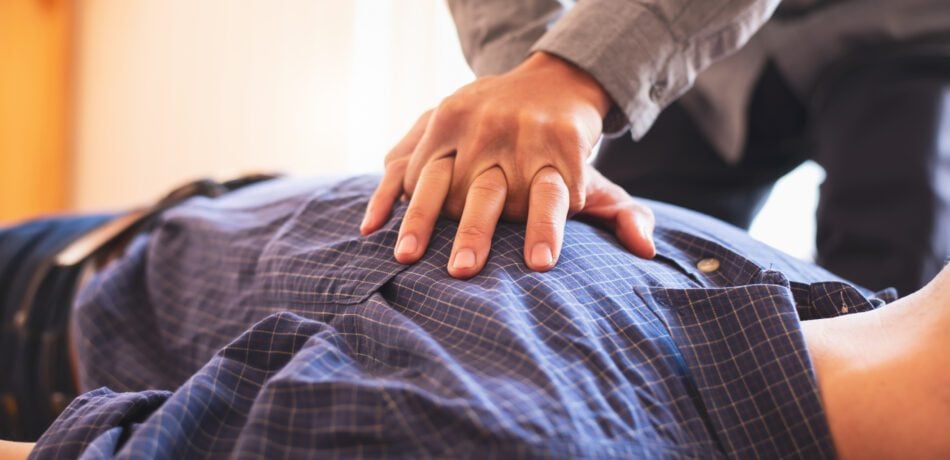Cardiac arrest is a serious medical emergency that causes hundreds of thousands of deaths each year. This is why it’s so important to know how to perform hands-only CPR. By administering CPR to someone who has collapsed, you can increase their chances of survival once EMS arrives.
The Importance of Hands-Only CPR: What to Know
Each year, 436,000 people in the United States die from sudden cardiac arrest. Over 350,000 cardiac arrests happen outside the hospital — mostly in homes or in public settings (such as the workplace). To improve chances of survival, it’s crucial that you can recognize the signs of cardiac arrest and take action immediately.
What Is Sudden Cardiac Arrest?
Sudden cardiac arrest is different from a heart attack. Think of cardiac arrest as an “electrical” problem: The heart malfunctions, stops beating correctly and is unable to continue pumping blood. A heart attack is different because it is a circulation problem, where the heart’s blood flow gets blocked. Symptoms of sudden cardiac arrest include:
- Sudden collapse and unresponsiveness
- No pulse; no breathing
If someone’s heart stops beating, but they receive immediate CPR, this doubles or triples their chances of survival. There is a 10% drop in survival each minute that someone is suffering a cardiac arrest. Every second counts.
Guaranteed Acceptance Life Insurance
Coverage options starting at $9.95 a month!
Guaranteed acceptance life insurance without medical exams, health questions, or rate increases.
What Is Hands-Only CPR?
CPR stands for Cardiopulmonary Resuscitation. This emergency first aid
technique helps blood keep flowing to the brain and organs until a normal heart rhythm is restored. Performing CPR helps prevent brain damage and increases the chances of the person’s survival.
As the name suggests, hands-only CPR is a type of CPR that you perform with only your hands — you do not need to give mouth-to-mouth breathing.
How to Perform Hands-Only CPR
If you see someone collapse, don’t wait for someone else to help. Immediately call 911. Then you should begin to administer CPR to keep blood flow active. (If you don’t feel confident, the 911 operator can help walk you through the process.)
Here’s how to perform hands-only CPR on a teen or adult (watch an instructional video here):
- Place the heel of one hand in the center of the person’s chest. Place your other hand directly on top of the first hand.
- Push hard and fast in the center of the chest. Your goal is to administer 100-120 compressions per minute.
- Continue to administer CPR until help arrives.
Once an EMS team arrives on the scene, they will perform rapid defibrillation (shocking the heart with an automated external defibrillator, or an AED, to restart it) and advanced resuscitation. The person will then undergo further care at a hospital.
Learn More About Hands-Only CPR
To learn more about CPR and feel confident taking action in an emergency, we recommend starting with the resources of our partner, the American Heart Association, at www.Heart.org. The following are additional resources:
- Find a CPR training center near you
- Purchase elearning CPR courses
- Get training kits for teaching CPR in schools
- Get workforce training courses for teaching CPR
- Find or donate to a Heart Walk event near you
- Listen to the Don’t Drop The Beat playlist (with songs at 100-120 beats per minute)
- Share your story as a Heartsaver Hero
Colonial Penn is here for you!
Colonial Penn is a proud local supporter of the American Heart Association. Colonial Penn has specialized in making life insurance simple and accessible by offering it directly to consumers since 1957. Click here to learn more.





